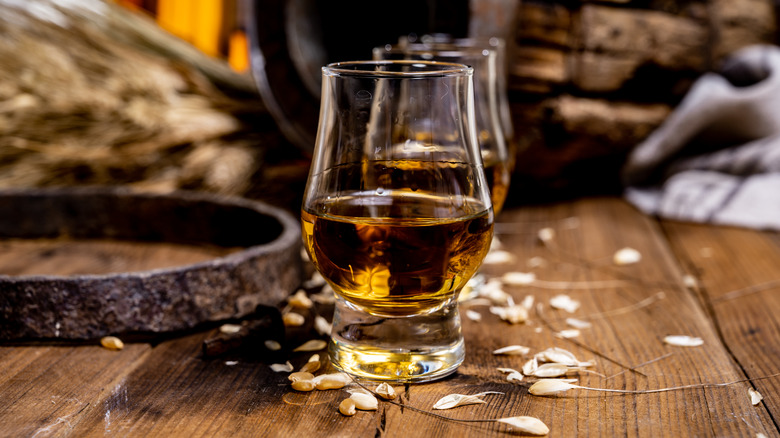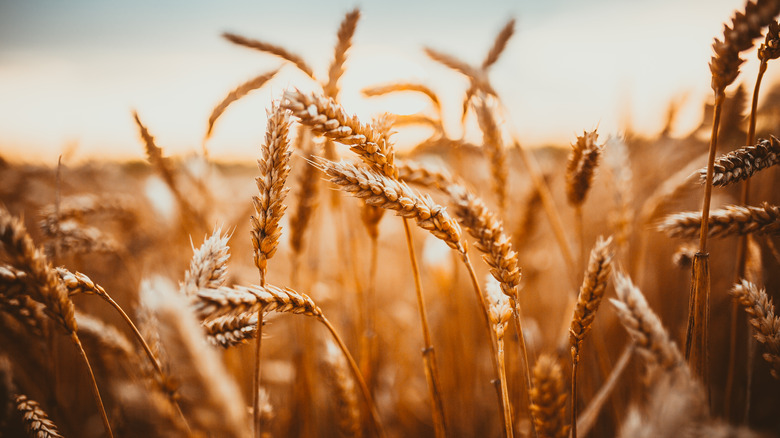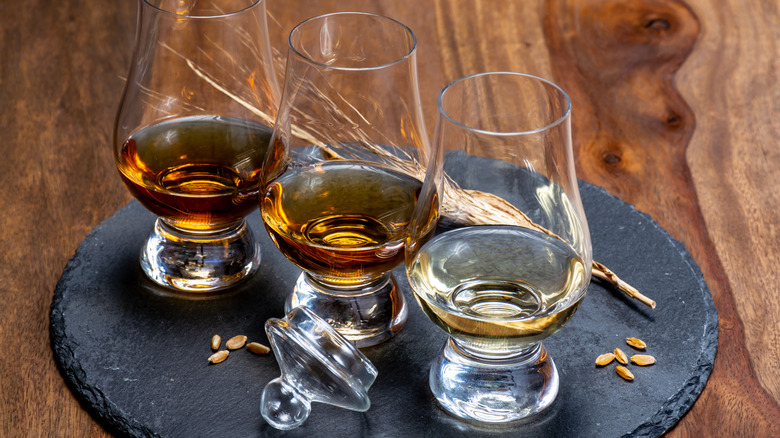How Do Different Grains Affect The Taste Of Whiskey?
Whiskey is a beloved spirit worldwide, known for its nuanced interplay of flavors. Despite its complexity, whiskey starts with just three basic ingredients: Water, yeast, and grains. The choice of grain is not just a matter of recipe; it's a crucial decision that shapes the whiskey's character. In the same way a painter chooses colors for a canvas, a distiller chooses grains for their whiskey.
The transformation from grain to whiskey is an age-old craft guided by the hands of distillers who understand the intricacies of their chosen cereals. In the fermentation process, yeast feasts on the sugars from the grains, creating alcohol and a host of flavor compounds. The type of grain dictates the sugars available and thus influences the flavor from the outset. Distillation then concentrates these flavors, which are further molded by aging in barrels, where the grains' contributions continue to evolve, developing complexity and depth over time.
The grain chosen can result in vastly different flavor profiles
Barley is the traditional grain of Scotch whisky and many single malts around the world, respected for its ability to carry a broad spectrum of flavors. It's known for introducing a certain biscuity sweetness, a kind of malty charm that evokes flavors ranging from caramel and chocolate to nutty and smoky, depending on the level of roasting it undergoes. Barley's versatility is also evident in its adaptability to various climates and soils, allowing it to be the cornerstone of distilling traditions across the globe.
Corn is the foundation of American whiskey, particularly bourbon. One difference between bourbon and whiskey is that the grain used for bourbon must be comprised of at least 51% corn. It's the sweetest of all whiskey grains, often contributing flavors of vanilla, coconut, and fruits, and it is known for producing a whiskey with a full, round mouthfeel. The high sugar content in corn leads to a higher alcohol yield during fermentation, and this inherent sweetness is a defining characteristic of bourbons, giving them their rich, velvety textures. Corn-based whiskey is often aged in charred oak barrels; these sweet notes can develop into deeper undertones of caramel, toffee, and even a slight spiciness.
Wheat and rye are other commonly used grains
Rye and wheat stand at opposite ends of the whiskey flavor spectrum, each bringing its own essence to the spirit. Rye, the grain of choice for those who prefer their whiskey with a peppery snap, delivers a spicy intricacy that can elevate a drink with its boldness — ideal for those who seek a spirited, full-flavored experience. It's the element that gives rye whiskey its signature zest, often sought after for cocktails that require an assertive flavor. In contrast, wheat offers a smooth counterpoint. Wheat is favored in bourbons for its soft, sweet notes and provides a velvety backdrop, perfect for sipping straight and appealing to both novices and connoisseurs who appreciate subtlety in their whiskey.
As whiskey artisans continue to push boundaries, many non-traditional grains are beginning to be utilized in the distilling process. Grains like triticale and quinoa are explored for their unique contributions — triticale for its seamless blend of rye's spice and wheat's softness, and quinoa for its nutty and earthy notes. These contemporary grains are not just expanding whiskey flavor profiles but are also reflecting a growing trend of sustainable and diverse agricultural practices in whiskey production.
So, what is the best type of whiskey? The answer to that question comes down to personal taste. But one thing is for sure: We can thank the various grains used in whiskey production for the multitude of delicious varieties available.


